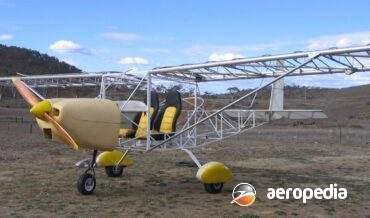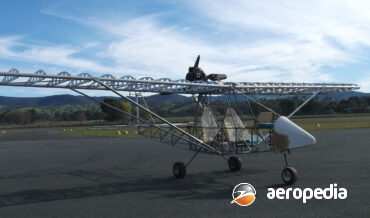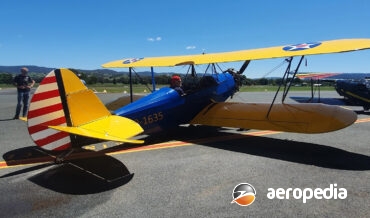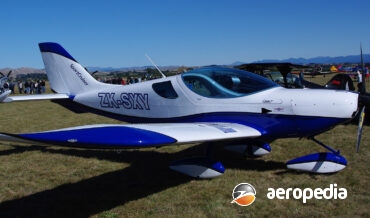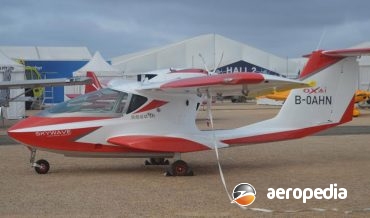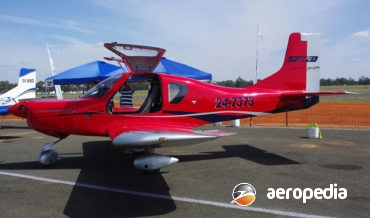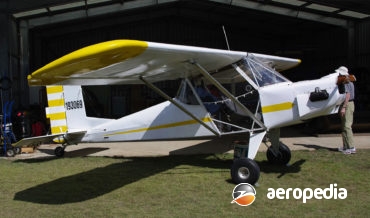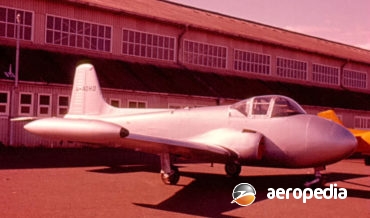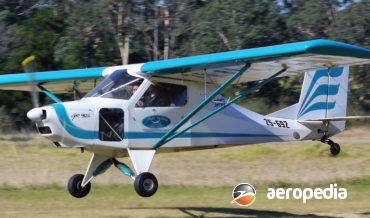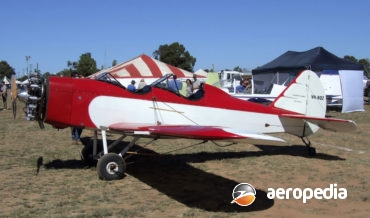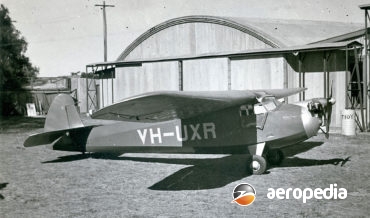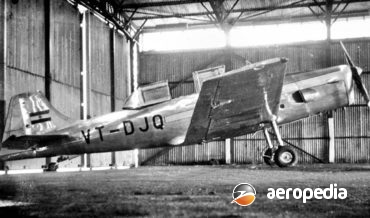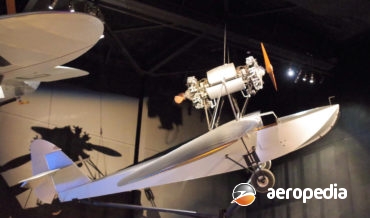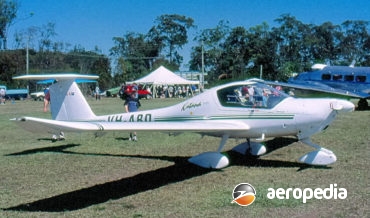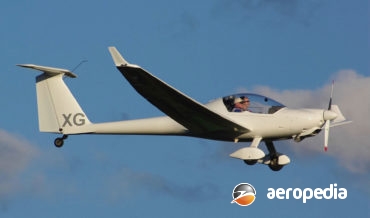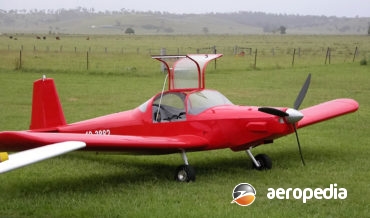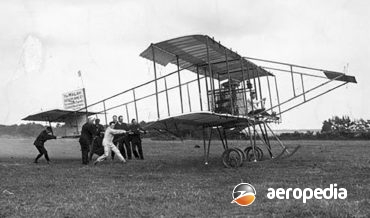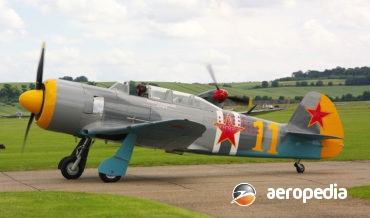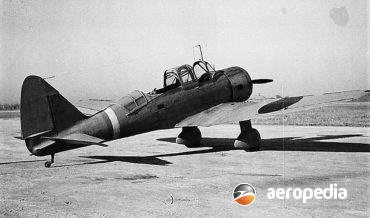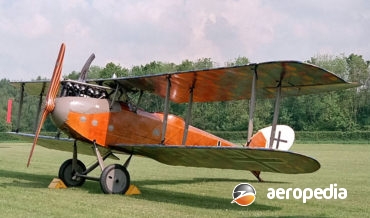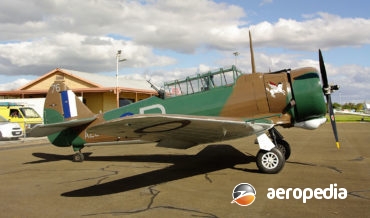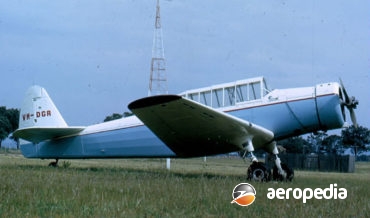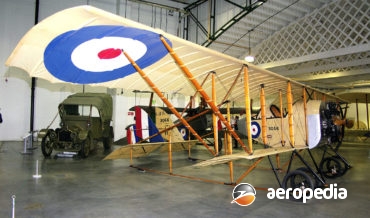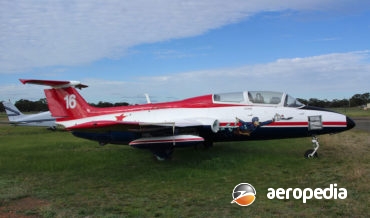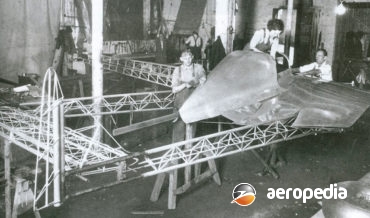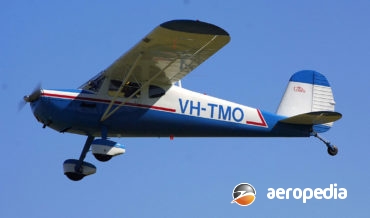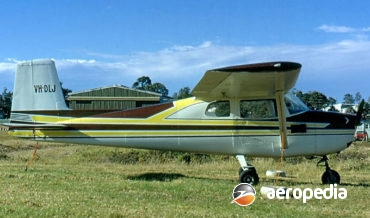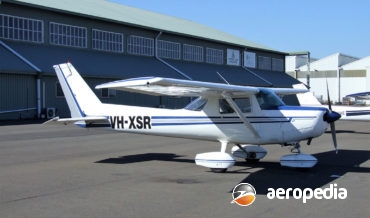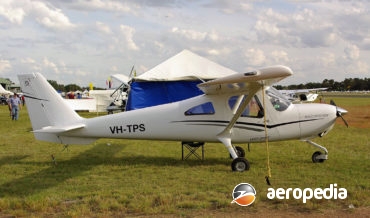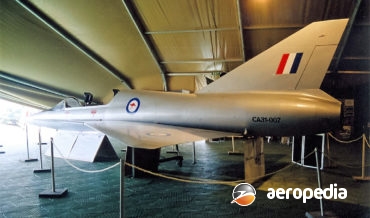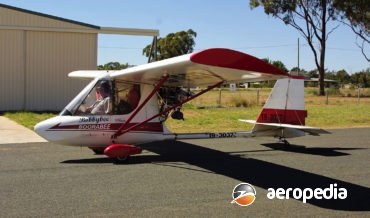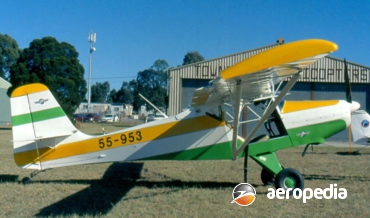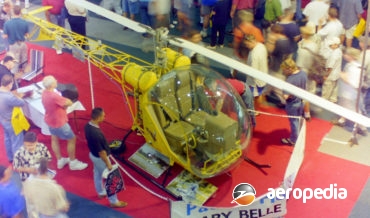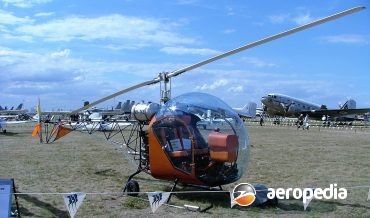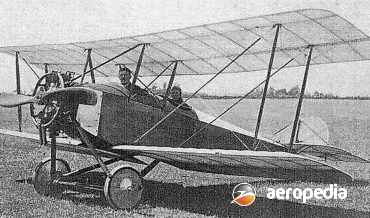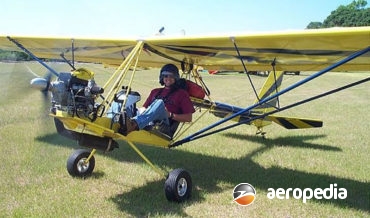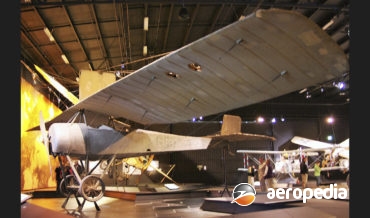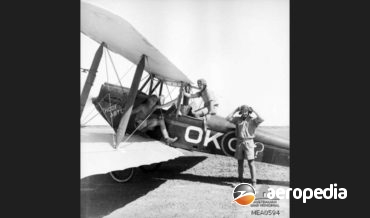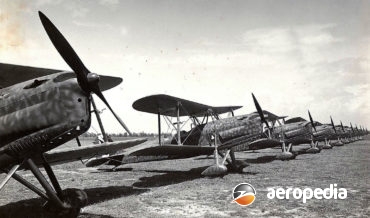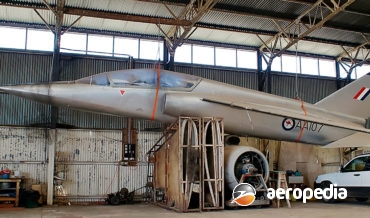All Contents
Contents
Photograph: The first Tempest during construction at Tumut, NSW (M Roodt) History: The Tempest is a two-seat, side-by-side, light sport aircraft, designed by Michael Roodt for touring. It is fitted with a 80 kw (108 hp) Lycoming four-cylinder engine.
David C. Eyre
- November 22, 2021
Photograph: The first Australian Spurwing during construction (M Roodt) History: The Spurwing is a two-seat in tandem light sport aircraft fitted with a Rotax 618 LC engine providing 56 kw (75 hp). The aircraft was initially designed and built by Mr Roodt in South Africa where he first aircraft was
David C. Eyre
- November 22, 2021
Photograph: The Barnstormer at Tumut, NSW (M Roodt) History: The Barnstormer is a two-seat in tandem scale Boeing Stearman initially fitted with a seven-cylinder Rotec R-2800 radial engine providing 83 kw (110 hp) with a cruising speed of 121 km/h 975 mph) and stalling speed of 68 km/h (42 mph).
David C. Eyre
- November 22, 2021
The SportsCruiser was designed in the Czech Republic as an all-metal low-wing, low maintenance aircraft and is built at the CZAW facility.
David C. Eyre
- June 26, 2020
The M-2 Skywave is one of a new series of carbon fibre two-seat light sport aircraft introduced to the market in the 21st Century and is similar in appearance to the Icon M-5 from the United States and the Vickers Wave produced at New Plymouth in New Zealand.
David C. Eyre
- March 23, 2020
The Lightwing Speed was designed and built by the Hughes Lightwing Co at Ballina, NSW to be produced in kit form for the light aircraft market, being produced in four basic versions, the two-seater known as the SP2000-S which is a lightweight models for registration under Recreation Aircraft Australia Regulations
David C. Eyre
- August 24, 2019
The P R Breeze is a single-seat variant of the PR-582 Pocket Rocket using the basic Lightwing fuselage, but fitting it with a single parasol configuration wing and installing a range of Rotax engines, including the Models 582, 503 or 618 two strokes, or the Rotax 912 four-stroke.
David C. Eyre
- August 24, 2019
The P-84 Jet Provost was developed as a private venture utilising a considerable proportion of the structure of the piston-engine P-56 Provost, which was then in service with the RAF as a basic trainer.
David C. Eyre
- August 24, 2019
Construction of the prototype of the Lightwing series began in 1984 and, initially known as the GA-55, it flew for the first time in June 1986 and was built as a ‘micro-light’ to meet ANO 101-28.
David C. Eyre
- August 24, 2019
The Hevle Classic is two-seat development of the Bowers or EAA Fly Baby which was designed as a simple, easy to fly, low-coast light aircraft for the amateur builder.
David C. Eyre
- August 24, 2019
The Praga E.114 was designed by Jaroslav Slechta in Czechoslovakia and initially built by CKD Praga, where it became known as the Air Baby.
David C. Eyre
- August 24, 2019
The HT-2 was designed by Dr V M Ghatge, Chief Designers of Hindustan Aircraft Ltd at Bangalore, India.
David C. Eyre
- August 24, 2019
The Ibis was a foray into the design and construction of a light aircraft by one of Australias most famous aviators, Herbert (Bert) John Louis Hinkler.
David C. Eyre
- August 24, 2019
The DV-20 Katana is a two-seat training and touring aircraft produced by HOAC Austria Flugzeugwerk at Weiner Neustadt, being basically a development of the Dimona and Super Dimona motor gliders.
David C. Eyre
- August 24, 2019
The Dimona is a powered glider built by Walf Hoffman Flugzeugbau KG at Ulm in Germany and at Weiner Newstadt in Austria, the prototype of which flew for the first time on 9 October 1980, and more than 300 examples have been delivered.
David C. Eyre
- August 24, 2019
The Typhoon was designed by the late William ‘Bill’ Andiel and marketed by Homebuilt Aviation in northern New South Wales.
David C. Eyre
- August 24, 2019
The brothers, Leo Austin Walsh was born in Bradford, Yorkshire, in 1881 the family emigrating to Auckland in 1883. His brother, Vivian Claude Walsh was born in New Zealand in 1888.
David C. Eyre
- August 24, 2019
The Yakovlev Yak-11 (known to NATO as Moose) began to enter service with the Soviet Airforce in 1947 and bore some resemblance to the designer, Aleksandr Yakovlevs, wartime fighter designs, the wing, tail assembly, and undercarriage being similar to those of the Yak-9 single-seat fighter.
David C. Eyre
- May 19, 2019
In May 1937 a specification was issued for a two-seat co-operation aircraft for the Japanese Army and to meet this Mitsubishi put forward the Ki-35 and Tachikawa the Ki-36. In the event only Tachikawa received an order for a prototype to be built, the aircraft being designed by a team
David C. Eyre
- May 19, 2019
The LVG series of aircraft was designed by Franz Schneider, and developed by Luft-Verkehrs Gesellschaft Johannistal (LVG), this company producing a series of unarmed reconnaissance and bomber aircraft during World War I, aircraft in this series forming part of the equipment of the German air force units at the outbreak
David C. Eyre
- May 19, 2019
The Wirraway (an aboriginal word meaning challenge) was a development of the North American NA-32 and NA-33 by the Commonwealth Aircraft Corporation. In January 1942, eight Wirraways engaged a force of more than 100 Japanese aircraft near Rabaul.
David C. Eyre
- May 19, 2019
The Wackett, named after its designer, Sir Lawrence Wackett, was developed by the Commonwealth Aircraft Corporation as an intermediate step between the elementary trainer, the de Havilland DH-82 Tiger Moth, and the more advance trainer, the CAC Wirraway.
David C. Eyre
- May 19, 2019
In 1913 the brothers, Gaston and Rene Caudron, who lived in the Rue area of the Somme, designed and built a single-seat sesquiplane known as the Caudron G.II. Later in 1913 Lt Chanteloup looped a Caudron over Issy aerodrome near Paris.
David C. Eyre
- May 19, 2019
The L-29 Delfin was Czechoslovakia’s first jet aircraft of indigenous design, being designed and built at the Vodochody Works of the Czech nationalised OK industry, the company being known as Aero Vodochody Narodni Podnik and it has been building aircraft since just after World War I.
David C. Eyre
- May 19, 2019
Following the announcement of plans for the 1934 England to Australia sponsored by Sir Macpherson Robertson, an Australian design team comprising L J R Jones, T D J Leech and D Saville set about designing and building an aircraft to enter.
David C. Eyre
- May 17, 2019
During the years 1946 to 1949 Cessna produced two basically identical two-seat light cabin monoplanes known as the Models 120 and 140.
David C. Eyre
- May 17, 2019
Designed as a successor to the Cessna Models 120 and 140, production of which concluded in the mid 1950s, the 150 series proved to be one of the most popular civil training aircraft, with about 22,839 examples constructed and delivered between 1959 and 1977.
David C. Eyre
- May 17, 2019
The 152 was introduced to the Cessna range in 1978 as a redesign of the 150 and was, like its competitors the Beech Skipper and Piper Tomahawk, aimed at the training market as a new design.
David C. Eyre
- May 17, 2019
In 2006 Cessna announced it intended to produce a series of new designs using modern technology and, amongst these, was a new training aircraft, seating two, to meet new light sport aircraft regulations introduced into the United States.
David C. Eyre
- May 17, 2019
The CA-31 was one of a series of projects designed by the Commonwealth Aircraft Corporation to meet a requirement of the RAAF for a supersonic trainer and light attack aircraft, being designed to facilitate pilots proceeding from the Macchi MB-326H to the GAMD Dassault Mirage IIIO, being expected to be
David C. Eyre
- May 17, 2019
The Boorabee is an ultralight which could be built in either single-seat or two-seat forms.
David C. Eyre
- May 17, 2019
In the mid 1980s Mr Dan Denney formed Denney Aerocraft Co in Boise, Idaho to build a two-seat ultra-light aircraft known as the Kitfox, and in the first year 21 kits were delivered.
David C. Eyre
- May 17, 2019
The Baby Belle first flew in 1990 and has been developed as a scaled down replica of the well known Bell 47 series of helicopters, being of rugged construction and able to fly all-year round.
David C. Eyre
- May 17, 2019
This series of helicopters was founded in the 1950s and was known as the Helicom, this evolving into the Commuter, and later the Commuter II. Manufacturing rights were then sold to one of the original partners and became Canadian Home Rotors Inc and it was sold for many years
David C. Eyre
- May 17, 2019
This was one of a number of light training aircraft and was described as a fully-aerobatic two-seat conventional tractor biplane built by the Canterbury (NZ) Aviation Company at Sockburn near Christchurch and in many ways was similar in appearance to the Sopwith Tabloid. It made its first flight
David C. Eyre
- May 17, 2019
The Javelin was introduced to the ultralight market in 1999 and was intended to appeal to pilots interested in having an open cockpit.
David C. Eyre
- May 17, 2019
Gianni Caproni (1886 – 1957) designed and built his first aeroplane, known as the Ca.1, in 1910 and went on to have a long and distinguished career in aviation, his achievements including designing bombers for the Italian Air Force, his design the Ca.3 being built also in the United States,
David C. Eyre
- May 17, 2019
The Ca 100 was produced in Milan, Italy from 1929 and was a licence-built variant of the DH-60 Moth.
David C. Eyre
- May 17, 2019
The Ca.164 was designed and developed as a training and touring biplane and was produced in Italy for the Italian Air Force and Italian aero clubs shortly prior to World War II.
David C. Eyre
- May 17, 2019
In 1964 the Commonwealth Aircraft Corp was considering the development of an advanced supersonic aircraft to meet a future requirement for the RAAF for a supersonic trainer which could also be used for weapons training.
David C. Eyre
- May 17, 2019
Recent Comments
Archives
Categories
- No categories
Categories
- No categories
Latest Posts
Newsletter

